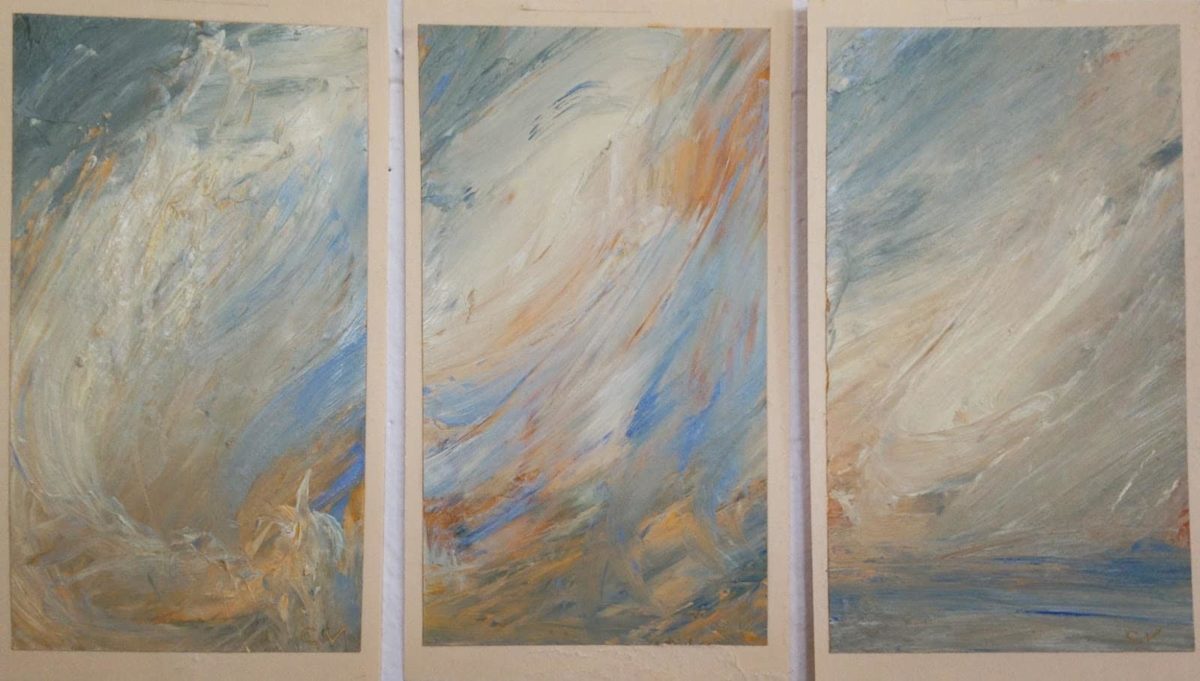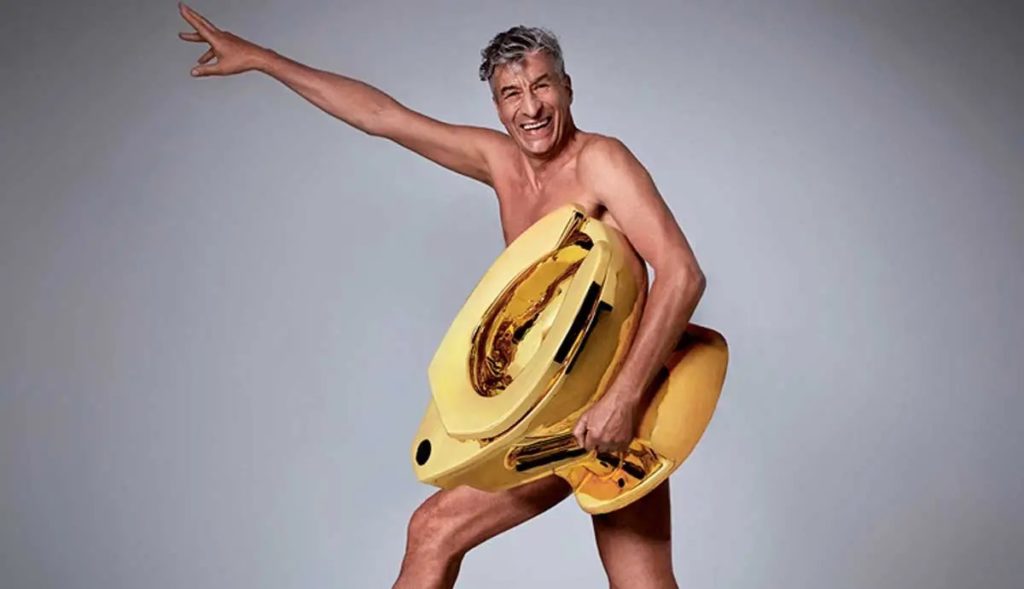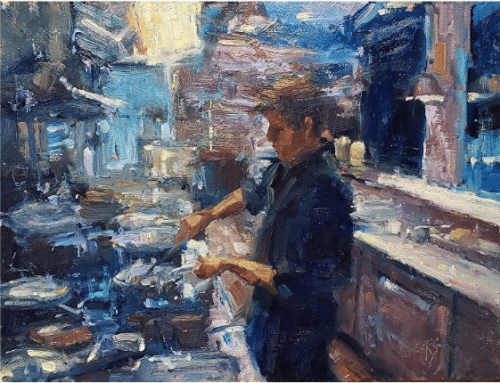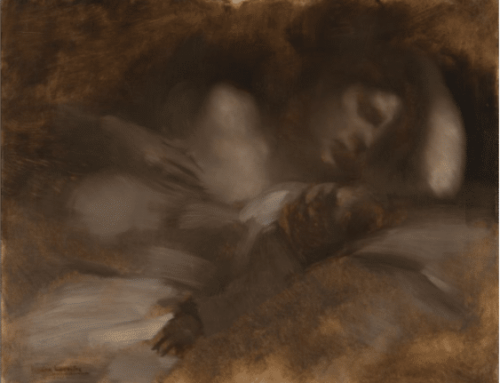| The River Gallery School sells a booklet on the process. |
| Sequencing workshop leader at The River Gallery School, Lydia Thomson, explains the process. “These are oils, and therefore …. they’re beautiful,” she tells her students. |
Sequencing involves painting three small pieces at once. We made seascapes on card-stock – the cheaper the better, as this is about enjoying the process.
It goes like this: put on latex gloves, scoop up a dollop of COLD WAX MEDIUM, and kneed it into the surface of three small pieces of canvas paper, card stock, or whatever. Made of bleached bees wax and a binder, cold wax is wonderful stuff. It’s smooth to the touch, takes paint in a manner that allows good control of layering and blending, and acts as a drying agent to boot.
Using this medium makes possible a meditative, tactile experience of physically massaging the lush oil colors into the silky wax medium. Tape down three small “canvases” in a row. Start on the one furthest left, and work to the right, making similar – but different! – gestures each time.
Here’s the setup: a stick, a few rags, a razor for scraping off “mistakes,” three pieces of card stock taped to a sturdy surface and latex gloves, as your fingers do the painting. The palette consists of your favorite colors – generally, a spectrum of paints surrounding two transparent earths and a generous dollop of cold wax.
| As soon as someone finishes a sequence, he or she tapes all three to the wall. |
Once you’ve got a transparent layer of wax on all three, you can begin rubbing on colors. OR you can tone the base wax layer with a transparent earth color, blending until it’s covered completely (the transparent brown-pink of umber works, but you could also use something like transparent red oxide, Indian yellow, or burnt sienna).
After you’ve toned the paper, you improvise, using whatever colors you feel, working them over and into the wax on each piece, moving from left to right, doing the same thing each time. Tell yourself you’re making a seascape if you need an anchor in representation or just of totally abstract.
| At work at the River Gallery school |
There’s a meditative quality in the repetitive nature of working on the three pieces at once, introducing a color to the first one, then the same color to the second and then the third, and so on, leaving traces of the same gestures on each painting.
It’s great for beginners because it involves no solvents, no brushes, no mixing, and minimal mess. Experienced painters will relish it as a reintroduction to the sensuous nature of oil paints and a fertile field for the development of new ideas for larger work.
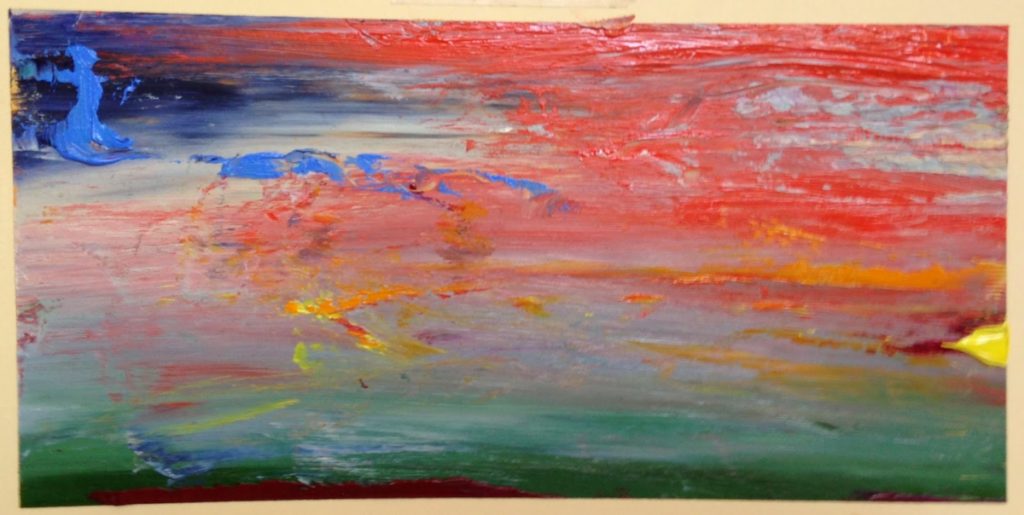 |
| This one has a Gerhard Richter-like vibe. |
The Case of the Missing 18K Gold Toilet
It’s one of the world’s most notorious unsolved art heists and one of the oddest tales in the art world.
The Collector reports that as of 2022, investigations into artist and prankster Mauritzio Cattelan’s missing gold toilet are ongoing, but that officials have largely concluded the artwork has probably already been melted down into untraceable gold bars and sold on the open market.
It’s estimated to be worth $6 million as a work of art and about $2 million in terms of raw material. The work was stolen by thieves who tore it from a museum using plumber’s tools and two separate getaway cars just days after it was installed in the former family home of Winston Churchill.
In 2016, New York’s Guggenheim Museum temporarily installed the lavish, fully functional toilet in a fifth-floor bathroom, allowing visitors to make use of it freely. In 2019, when then president Donald Trump refused to accept it as a gift for the White House, the work travelled to its short-lived stint at the Churchill site, the grand Blenheim Palace in Oxfordshire, England.
Dominic Hare, the CEO of Blenheim Palace commented, “It’s deeply ironic that a work of art portraying… the idea of an elite object made available to all should be almost instantly snatched away and hidden from view.”

